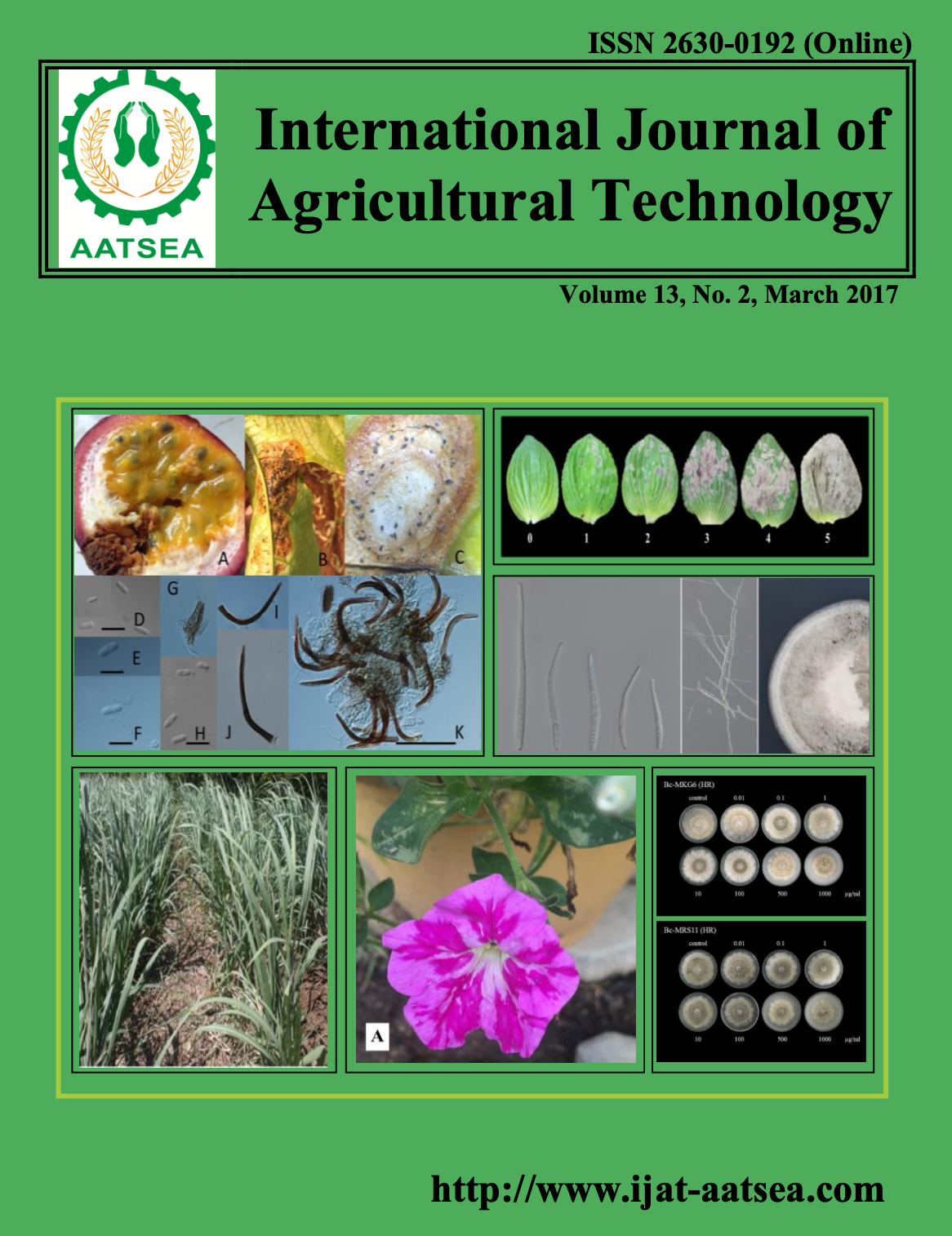Effect of banana ripeness and puffing temperature on puffed banana qualities and drying time
Main Article Content
Abstract
Article Details

This work is licensed under a Creative Commons Attribution-NonCommercial-NoDerivatives 4.0 International License.
References
AOAC (1995). Official Methods of Analysis (15th ed.). Washington, DC, USA: Association of Official Analytical Chemists.
Boualaphanh, K. (2007). Banana slice drying using hot air combined with superheated steam. Master thesis, King Mongkut’s University of Technology Thonburi, Bangkok, Thailand.
Jayaraman, K. S., Gopinathan, V. K. and Ramanathan, L. A. (1980). Development of quick-cooking dehydrated pulses by high temperature short time pneumatic drying. Journal of Food Technology 15:217-226.
Louka, N. and Allaf, K. (2002). New process for texturizing partially dehydrated biological products using controlled sudden decompression to the vacuum: application on potatoes. Journal of Food Science 67:3033-3038.
Mohapatra, D., Mishra, S. and Sutra, N. (2010). Banana and its by-product utilization: an overview. Journal of Science and Industrial Research 69:323-329.
Mudahar, G.S., Toledo R.T., Floros J.D.and Jen, J.J. (1989). Optimization of carrot dehydration process using response surface methodology. Journal of Food Science 54: 714 – 719.
Prachayawarakorn, S., Tia, W., Plyto, N. and Soponronnarit, S. (2008). Drying kinetics and quality attributes of low-fat banana slices dried at high temperature. Journal of Food Engineering 85:509-517.
Purlis, E. (2010). Browning development in bakery product. Journal of Food Engineering 99: 169-175.
Raikham, C., Prachayawarakorn, S., Nathakaranakule, A. and Soponronnarit, S. (2013). Optimum conditions of fluidized bed puffing for producing crispy banana. Drying Technology 31:726-739.
Saca, A. S. and Lozano, J. E. (1992). Explosion puffing of bananas. International Journal of Food Science and Technology 27:419-426.
Tabtiang, S., Prachayawarakorn, S. and Soponronnarit, S. (2012). Effects of osmotic treatment and superheated steam puffing temperature on drying characteristics and textural properties of banana slices. Drying Technology 30:20-28.
Tabtiang, S., Prachayawarakorn, S. and Soponronnari, S. (2016). Optimum condition of producing crisp osmotic banana using superheated steam puffing. Journal of the Science of Food and Agriculture 22:1244-1251.
Thuwapanichayanan, R., Prachayawarakorn, S. and Soponronnarit S. (2008). Drying characteristics and quality of banana foam mat. Journal of Food Engineering 86:573-583.
Varnalis, A. I., Brennan, J. G., MacDougall, D. B. (2001). A proposed mechanism of high- temperature puffing of potato. Part I. the influence of blanching and drying conditions on the volume of puffed cubes. Journal of Food Engineering 48:361-367.
Varnalis, A. I., Brennan, J. G., MacDougall, D. B. (2004). Optimization of high temperature puffing of potato cubes using response surface methodology. Journal of Food Engineering 61:153-163.
Zou, K., Teng, J., Huang, L., Dai X., and Wei, B. (2013). Effect of osmotic pretreatment on quality of mango chips by explosion puffing drying. LWT-Food Science and Technology 51:253-259.


